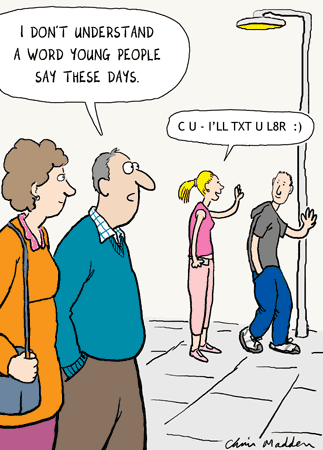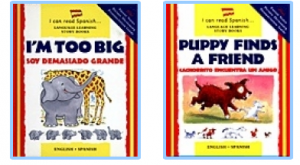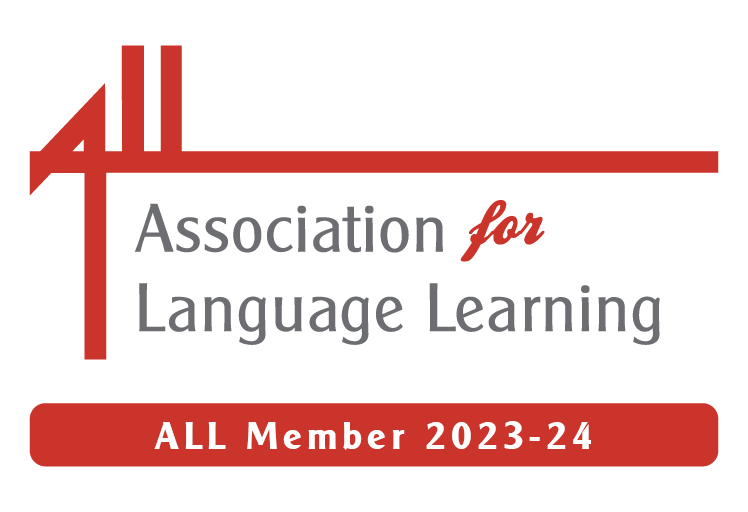Not quite sure what to do today? Nor is our hero. Read on to find out what he decides to do.
¡Vámonos!
Me gusta la música / A veces toco un instrumento – more Storybirds!
I’m having a bit of a Storybird ‘splurge’ at the moment. It’s my chosen form of relaxation this week!
So here are two I’ve just written with the QCA Unit Yo soy músico in mind (see here for a previous post on this unit and here for a fun activity we did using Twitter!). Two becasue one is very simple with phrases using tocar plus an instrument e.g. Toco la flauta, whilst the second adds a frequency phrase to the sentence e.g. Toco el piano cada miércoles; Toco la guitarra a menudo etc. I guess i could write a third version adding even more detail…
This story has beautiful illustrations to help talk about the weather in Spanish.
Another Storybird, this time with more text.
“Mis amigos raros is a Spanish story about Eduardo’s friends who are all a little out of the ordinary.”
Mis amigos muy raros. on Storybird
I’ve decided to (re)publish my Storybirds over the next few days. Here’s the first, a very very simple ‘story’ about colours in Spanish.
Los colores on Storybird
In celebration of the new features of Storybird, I’ve been back to the site and had another play around and written a new book!
I’ve written about Storybird before here, here and here. Oh, and here and here too!
New things on Storybird that I think are particularly useful from an educational point of view –
1. No more Flash so you can use and view the Storybirds on any smartphone or devices including iOS such as iPads and iPod Touch devices. This also means that you can write Storybirds in scripts that do not use Latin characters such as Greek, Mandarin and Arabic.
2. More categories, making it easier to search for a story written by someone else, and also filter for age appropriate stories.
3. New ‘create’ page and new covers.
HOWEVER, you may now be able to write in other scripts but you still can’t publish them to the PUBLIC gallery, nor can you publish in any language other than English. The Community Guidelines state
‘While we celebrate all cultures and languages, we can not at this time moderate and thus approve Storybirds for the public library that are written in languages other than English. We will be expanding internationally soon, and we will add specific language support as we do. In the meantime, the stories can still be published in your private library and shared with your family and friends.’
Whilst I know that this is a small company and moderation in lots of languages costs money, the MFL Twitterati did offer to help, and I’m sure that offer still stands?! And I wonder what their plans are – the site is now 3 years old. I will tweet and ask. Watch this space!
UPDATE
Here is the Twitter conversation with Storybird! (NB read from bottom up!)
So it seems we have a while yet before we can freely share our Storybirds on the site.
HOWEVER, to get around this, you can embed them into a blog (as I have here), or share the URL of your Storybird (I shared with my own email address then opened the book and copied the URL)
And there is also the wonderful MFL Storybird wiki. Whilst the URL way will still work, the fact that you are now given an embed code means that the books can now be embedded on the page and read there and then rather than having to be transferred to Storybird.com to read!
A shame that you have to “know the right people” to be able to access all these stories in other languages but better than nothing!
I was reflecting today how much things have changed since I began teaching – we still used a banda machine (ah, the smell of that fluid!), Spain had the peseta, computers were huge and static, and the www was in its infancy. Even in the last few years things have changed significantly with the arrival of smartphones and tablets – “fruity” or otherwise ;o)
By coincidence, I’d found that a resource I’ve used as a primary school teacher has now been released in a new format.
When first taught primary languages I discovered the I CAN READ series of books, firstly in French and then in Spanish. These bilingual books allowed learners to read the simple stories in English and French or Spanish at the same time, meaning that they were never unsure about the meaning of vocabulary. It also made it less ‘risky’ for a learner to choose such a book as they didn’t have the mental block of all the words being ‘foreign’.
Then, as learning became more ‘technological’ and with the advent of the IWB, Early Start began to market the books as Big Books on CD Rom, offering French Spanish and some German books. This meant that a whole class could read the book together, or have it read to them. They could complete activities collaboratively and discuss the text, focussing on individual items of vocabulary or grammar points like adjectives or exclamations. and of course, individuals could access them and play independently with the sound of the language adding to the reading that was possible with the books.
And now bsmallpublishing have added ebooks to the mixture! Priced £4.99 and available from the iTunes app store, there are currently 10 French and 2 I can read… Spanish titles, and then 3 Let’s read (aimed at older KS2/KS3 readers) eBooks in Spanish and French.
The eBooks all feature a helpful ‘tips and shortcuts’ page which explains how to interact with the book – the eBooks are intuitive but there are certain things, such as how to stop the book from reading in English and skip to the French/Spanish, that are best made explicit from the start.
Below are screenshots from two of the books – Soy demasiado grande and Le facteur spatial showing some of the features such as Read to me (press the green triangle), the thumbnail bar that appears so you can skip to the correct page, and the vocabulary/pronunciation page that highlights the key words in the book.

The bsmall webpage explains –
We have been busy preparing ebook versions of some of our bilingual stories. Our bilingual books are designed as fixed layout, colour ebooks with read aloud capabilities in two languages. They are in the epub format. They are readable on your iPad via the iBooks App and will be available soon for Kobo Vox and Kindle Fire. We’re adding more and more devices/distribution options as we go along so watch this space.
Read a little more about our list’s journey from print to digital on our blog.
And here is a Youtube video demonstrating how the books work using George, le poisson rouge.
httpv://youtu.be/1XA99B0ento
I think that the eBooks are great for individual pupil access which is after all the idea of a mobile device. The stories are simple yet appealing, and feature repetition of words and structures, making them very accessible to beginners as well as intermediate learners. If I were to use it as a teaching tool, I would want a way to choose between hearing the English OR the French/Spanish OR both, rather than having to ‘jump in’ as quickly as possible to isolate the French/Spanish story – perhaps a future update might allow this. The vocabulary section is great too – a clear picture dictionary makes it very accessible to personal learning. I might like to see some phrases added to this e.g. me gusta – I like / no me gusta – I don’t like or tengo – I have and quiero – I want in Soy demasiado grande; however, I appreciate that the idea of a picture dictionary is that it is visual and sentences are more difficult to illustrate clearly!
The other great thing about the eBooks is that, once purchased, they go into your iBooks library where you can use all the feature of that app too such as the ability to ask it to speak a word or phrase that you highlight (in any language for which you have the keyboard), define to find out the meaning of words or the search facility to find every occurrence of a certain word.
There’s a part of me that still loves ‘proper’ books, and I’m not entirely convinced that I’ll ever completely abandon the joy of literally turning pages, but I have to admit that in the language classroom, eBooks are a great tool that allow independent access to stories (and information books of course!) in other languages, not just in written but also in spoken form.
 I’ve received notification of what looks to be a very interesting event to be held at Coventry University London Campus on 24th October. Text messaging and Language Development.
I’ve received notification of what looks to be a very interesting event to be held at Coventry University London Campus on 24th October. Text messaging and Language Development.
I quote from the email I received –
Researchers from Coventry University, led by Professor Clare Wood, will present the results of their ongoing research into the effects of text messaging on children’s written language development.
In particular they will report on their most recent longitudinal project which has examined the relationships between texting, grammatical understanding and spelling ability in children and young adults.
The event will give delegates the opportunity to discuss and benefit from hearing the implications of these findings for their own areas of interest and activity as well as others and reflect on the broader implications of the work for children’s development.
All interested parties are encouraged and welcome to attend this free event. Refreshments and lunch will be provided.
Although you have to register before you receive further details on the Coventry University events page, they have kindly sent me the agenda so I can share it with you. It’s a half day event followed by lunch and an informal discussion with the presenters! And if you go to the Nuffield Foundation site , there is an outline of the research.
Whilst I can’t go, my interest is now piqued and I’ll be reading the research with interest!
Thanks to @AliceAyel on Twitter for flagging up a great post on a blog called Teaching Spanish w/ Comprehensible Input by Cynthia Hitz. The post is entitled Using videos of children’s stories and lo and behold, there was my son’s favourite story as a child, playing to me in Spanish.
Entitled Click Clack Muu, Vacas escritoras (Click Clack moo, Cows that type) the story is set on a farm where the cows get hold of a typewriter and start sending letters to Farmer Brown demanding electric blankets. And then the ducks get involved… Isaac is now 14 and can still recite it verbatim. And so can I! So it’s great to see this post with so many ideas of how you might use it in the classroom. If only I had a class with whom to share it.
httpv://youtu.be/MQS-_5_MP-Q
I found these Resources from PBS – they’re in English but there are some great ideas that could be translated into Spanish.
Gracias @sonrisadelcampo and thanks Isaac for the memories ;o)
¡Vámonos! ©2025. All Rights Reserved.
Powered by WordPress.
Theme by Phoenix Web Solutions










